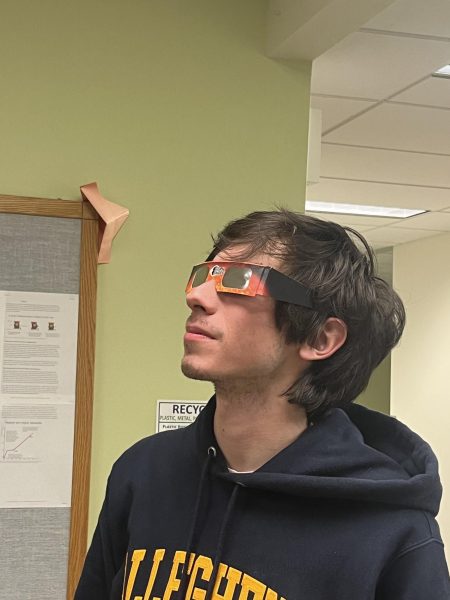The strange history of cannabis in the U.S.
Like many things in America, weed is equally politicized and misunderstood. Since little is concretely known about the consumption and effects of marijuana, much of the conversation around its use is speculative. Questions about what we know about the drug, what it does to the brain and what initially made it illegal go unanswered because it has become culturally taboo.
Visiting Assistant Professor of Psychology Nancy Frambes, whose research interests include drugs, human behavior and cannabis use, explained that marijuana consumption acts on the endocannabinoid system, which regulates a number of bodily functions through a vast network of cells.
“When we are born we have not all, but most, of the neurons we’re gonna have in life, and there’s just a mass array of connections between cells,” Frambes said. “It’s kind of like strengthening those connections of what you’ve learned, getting rid of stuff you don’t need — the endocannabinoids seem to be really important for that pruning.”
The cannabis plant contains cannabinoids that, when consumed, produce a variety of effects on the body and brain. The most well-known of these are tetrahydrocannabinol, or THC, and cannabidiol, or CBD. THC produces effects in the brain that impair those functions in the endocannabinoid system — produces a “high” — while CBD can produce calming effects in the body — and does not produce a “high” — according to Frambes.
Frambes clarified that not much is known about the effects of cannabis use in the brain, particularly the long-term effects, since the discovery of the endocannabinoid system is relatively recent. The observable effects, though, act on that already-present system.
“There is an impairment of memory while someone is under the effects,” Frambes said. “We know cognitive processing memory doesn’t work as well, short term memory especially.”
She also stressed that marijuana is one of the safer drugs, and that the dangers of overconsumption are limited or rare.
“One of the reasons that people choose to use cannabis — and they use it recreationally or quasi-medically, to self medicate — is it has some anti-anxiety features,” she said. “And so it sometimes almost takes people too far, that they’re so low-key that they lose motivation. It’s called amotivational syndrome.”
Despite its reputation of being a relatively safe drug, marijuana is fully legal in only 20 states. This criminalization has little to do with the drug itself, but rather who uses it.
The cannabis plant was ubiquitous in the U.S. around the era of colonialism and beyond. The hemp fibers from the plant were used to make cloth and paper while hemp was even used as currency in some states, according to History.com.
Flash forward to the years following the Mexican Revolution of 1910, wherein Mexican immigrants made their way to the U.S., introducing American culture to recreational marijuana use. Racist reactions to this influx of immigrants contributed to a negative view of marijuana, and by 1931, 29 states had outlawed the use of the drug, according to PBS.
Prohibition was an additional catalyst for the illegalization of the drug. Though marijuana use did not entirely replace alcohol consumption, there was an increase in use across the country. According to Frambes, this led to retaliation by a variety of companies.
“Prohibition falls, and suddenly you have all these companies — distilleries and breweries — that are trying to get back on-line, and they’re seeing some of their business has been taken away,” Frambes said. “So there was a real push there to not allow cannabis to be legal.”
The Marijuana Tax Act of 1937 effectively criminalized marijuana for all but those who could afford to pay the tax.
So while marijuana posed no real threat to society — counter to propaganda messaging of the 1930s through the 1950s, which painted the drug as an instigator of criminal activity and a gateway to harder drugs — its criminalization was ruthless and rooted in racism. The portrayal of marijuana as an exclusively dangerous substance was a choice Frambes says was not based on knowledge of the drug itself.
“I think the one thing we can say, even if some of that is speculation, is that the illegalization of marijuana was not about the drug, or the effects of the drug,” she said. “The reason that marijuana was made illegal probably didn’t have anything to do with the drug, as much as capitalism.”
The modern conversation around legalization also poses its challenges and is rooted in prejudice for some minority groups, according to Richard Mills, ’26.
“All of the people who are going to be selling it legally are going to be upper class white people,” Mills said. “So, at the end of the day, it’s still hurting lower class people and Black people just as much as if it was illegal. It’s almost like, either way, things are going to go bad for lower class people and African American people, who are generally hurt by the war on drugs.”
From long-term effects to legalization, much about marijuana is nebulous.
“There’s no black and white,” Frambes said. “Everything’s gray, and marijuana’s just like that. There’s some good to it and there’s some bad to it, and people are better off knowing a little bit about it.”

Sam Heilmann is a sophomore from Johnstown, PA. She is majoring in Communications. This is her second year on the Campus staff, and her first as Opinion...







Jason Harvey • Nov 16, 2023 at 7:35 am
Great Post! The strange history of cannabis in the U.S. is characterized by a dramatic shift from widespread use and acceptance to prohibition and stigmatization, followed by a more recent trend toward legalization and changing societal attitudes. The history reflects a complex interplay of cultural, racial, political, and economic factors that have shaped the trajectory of cannabis in the United States.